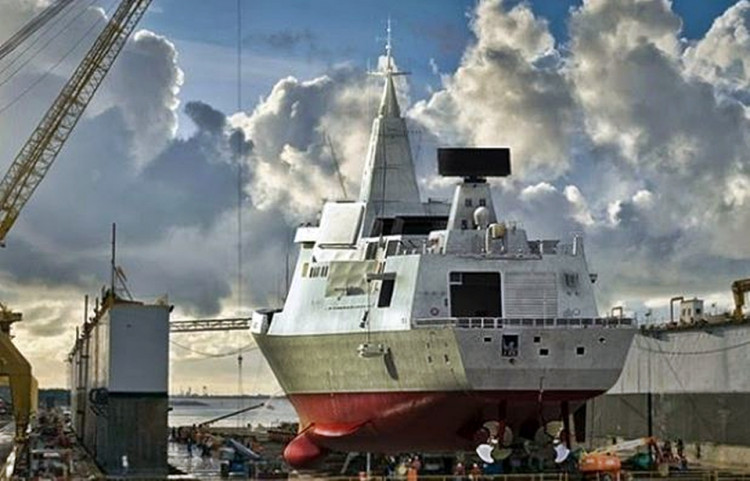The People's Liberation Army Navy (PLAN) has no warship in service or building capable of mounting and firing an electromagnetic railgun. And it won't have one until the 2020s.
It remains uncertain if PLAN still plans to arm its proposed Type 055A guided-missile destroyers with railguns. Two years ago, PLAN said it expected to begin building the Type 055A (the second-generation Type 055) starting sometime in the 2020s, but this now seems highly unlikely.
China was apparently in the early stages of developing its own railgun when PLAN made the surprising announcement in mid-2016 that it intended to arm the Type 055A with railguns. PLAN planned to initially use its railguns to replace the Close-In Weapon Systems (CIWS) providing the destroyer's last line of defense against attacking enemy aircraft and missiles.
PLAN's CIWS is the Type 730 seven-barreled 30 mm Gatling gun. This weapon is said to be effective against slow aircraft and aerial drones. It is useless against supersonic cruise missiles and modern anti-ship missiles, however.
PLAN said the larger version of this small CIWS railgun will be a 32-megajoule weapon capable of firing a 10-kilogram shell over a distance of 100 nautical miles. A Type 055A will require an integrated electric propulsion system similar to that found in the U.S. Navy's Zumwalt-class stealth destroyers to generate the massive electrical power needed to continuously fire a railgun.
All the six Type 055 destroyers either launched or building will not mount railguns. The future Type 055A -- if this warship is ever built -- will require the installation of an integrated electric propulsion system.
China, however, has not shown itself capable of building efficient power plants that will generate railgun power, however. Neither has it formally announced the building of the Type 055A or any warship that will mount a railgun.
The U.S. Navy calls these power plants Pulsed Power Containers or PPCs. PPCs consist of a large array of capacitors or rechargeable batteries packed inside ISO containers. Each PPC container has enough energy to emit 18 kilowatts to fire a railgun round.
To enable a railgun to fire 10 rounds per minute, a PPC must recharge in seconds. It must also be able to store and discharge the energy in a very short time while managing the massive thermal load generated by the process.
Not much had been heard of PLAN's railgun until February 2018 when Chinese state-owned media claimed a railgun had been mounted aboard the Type 072III-class landing ship Haiyang Shan (936). The Haiyang Shan is not a surface warship but is a transporter of troops, tanks, and other military equipment.
Since then, Chinese media alleges the railgun was tested at sea but without offering any proof. Chinese media also claims Chinese technicians have achieved a "breakthrough" in generating the massive power required for the continuous firing of a railgun, again without proof.
Last week, Chinese state-owned media CCTV said PLAN has gotten closer to equipping its warships with railguns. It said the railgun is being operationally evaluated at sea.
CCTV also said the railgun aboard the Haiyang Shan is based on "fully independent intellectual property," meaning indigenous Chinese technology not stolen from the United States and not copied from other countries.
Western military experts explain that operational evaluation means PLAN is testing the weapon under more realistic conditions. Deployment aboard a warship or warships, however, will depend on the results of the operational evaluation. In PLAN's case, deployment remains an open-ended date as of this time.






